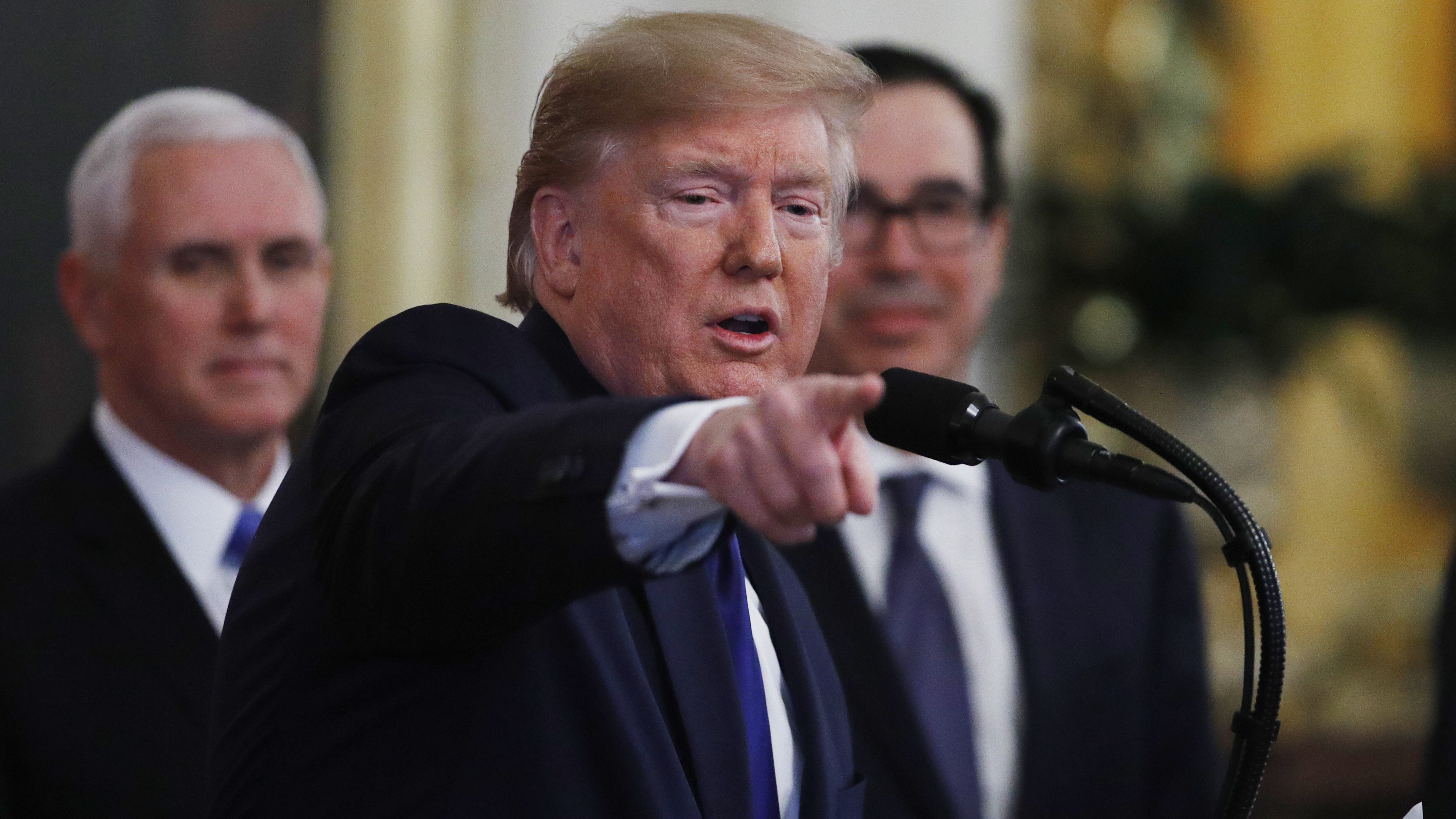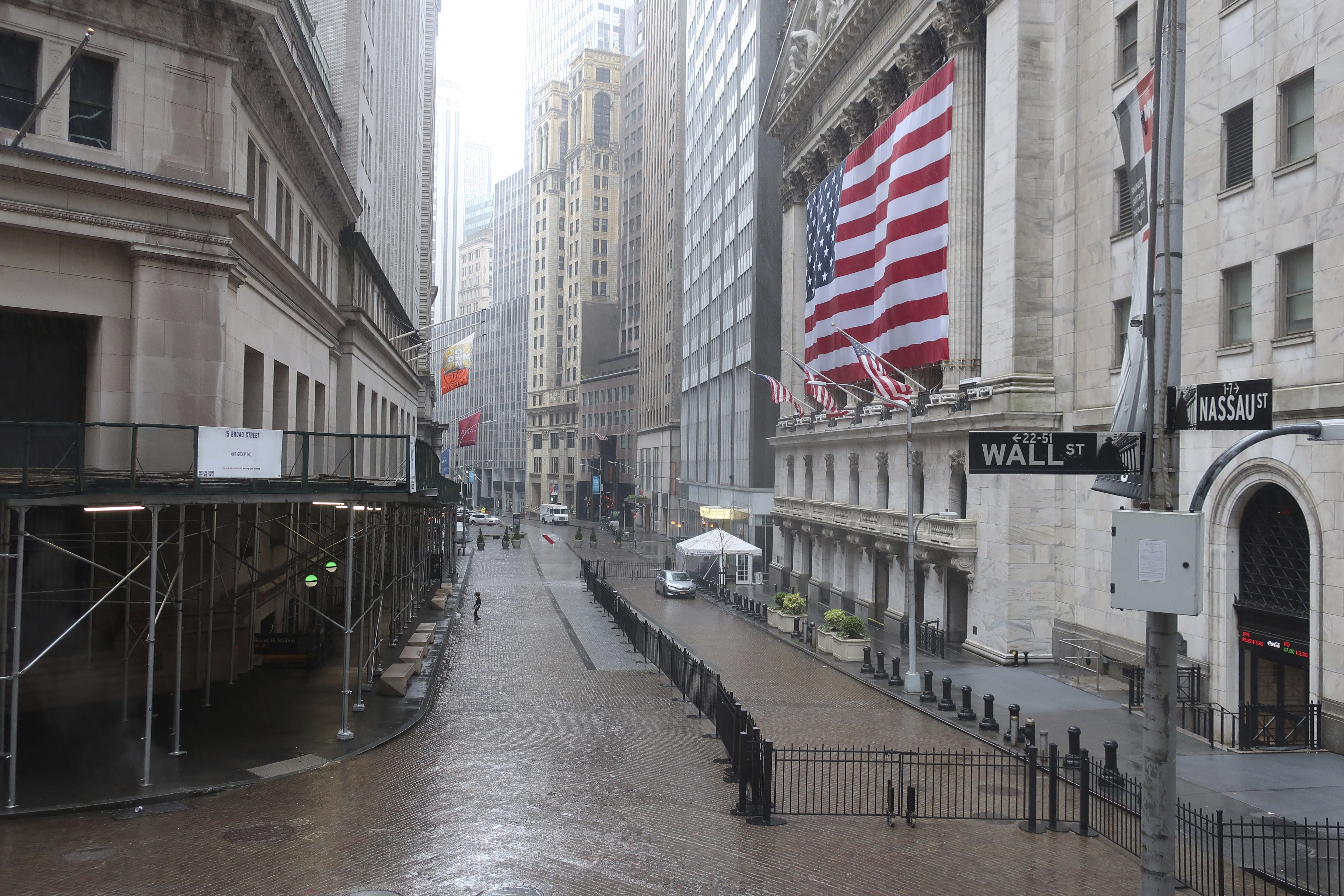
Donald Trump speaks before signing "phase one" of a US China trade agreement with Chinese Vice Premier Liu He, in the East Room of the White House. With the President from left are Vice President Mike Pence and Treasury Secretary Steven Mnuchin, in Washington, the U.S. January 2020. /AP
Donald Trump speaks before signing "phase one" of a US China trade agreement with Chinese Vice Premier Liu He, in the East Room of the White House. With the President from left are Vice President Mike Pence and Treasury Secretary Steven Mnuchin, in Washington, the U.S. January 2020. /AP
Editor's note: Azhar Azam works in a private organization as a market & business analyst and writes about geopolitical issues and regional conflicts. The article reflects the author's opinions, and not necessarily the views of CGTN.
Ahead of the U.S. presidential elections in November, Donald Trump is desperately trying to lift his sharply declining approval ratings (which is up recently, though) that have been falling over his botched response to the COVID-19 U.S. outbreak and crazy advice about treatment of COVID-19 by injecting bleach or other disinfection.
His real worry is that the only thing he was relying on heavily, the U.S. economy, is headed for a collapse comparable to the Great Depression. With a predicted 50 percent drop in GDP and 30 percent rise in the unemployment rate, the economic fragmentation would be a disaster to his popularity in front of campaign for the second term.
As Goldman Sachs forecasted that the global economy has likely bottomed so once health situation eases down, the U.S. president can overhaul his strategy to relocate the country on the path of economic revival. He could also hearken to the bank assurance that if Western economies can manage even a partial recovery relative to China's economic activity rebound since February – it "would imply brisk sequential activity growth in the remainder of Q2," Goldman said.
But Trump has favored confrontation over cooperation. Last weekend, he pulled his antediluvian tariff gadget to renew a latest round of trade war with China – toning down the phase-one trade deal that to him has now become of secondary importance to the COVID-19 pandemic.
His rhetoric toward Beijing, arguing over the origin of COVID-19 U.S., echoed a shrill rebuttal from the global stock markets which on May 4, smarted biting losses and strengthened the U.S. dollar and pushed gold prices higher.
The speculations around rekindling of tariff war stoked so many fears in equity markets that pan-European STOXX 600 indexes dropped 2.65 percent while MSCI global stocks gauge shed more than one percent. Dow and S&P 500 on the Wall Street also lost 120.01 and 4.36 points respectively.
Maybe, Trump is confident that the regeneration of trade war would help him to bring back and maintain his popularity and earn him a win in the next elections. Nevertheless, in the middle of fragile growth projections of the U.S. economy, the likelihoods of waging and winning a tariff feud against Beijing are microcosmic instead it would drive the world's largest economy to increased turbulence.

The normally busy area of Wall Street at the New York Stock Exchange is empty on a rainy day in New York, the U.S. April 2020. /AP
The normally busy area of Wall Street at the New York Stock Exchange is empty on a rainy day in New York, the U.S. April 2020. /AP
Rendering a stark warning to the U.S. president about the serious consequences of slapping tolls on Chinese goods – the U.S. experts, media and businessmen cautioned that American economy was too weak to handle the impacts of a trade war with China and drew its comparison with the 1930 Smoot-Hawley Tariff Act that had triggered tit-for-tat tariffs and exacerbated historic economic downturn in the U.S.
CNBC Mad Money and host Jim Cramer said it's really important to recognize that Trump now wants to raise tariffs with 30 million people unemployed. Tech billionaire Mark Cuban dubbed the plan "zero sense" and called on to scrap it immediately, invoking more than 71 percent Americans were concerned about the impact of Trump's recent trade policies and tariffs on their household expenses.
Meanwhile, the companies in the U.S. are already bearing the brunt of up to 25 percent tariffs on 370 billion U.S. dollars of Chinese goods despite the phase-one trade deal and are witnessing their sales wiped out. The additional levies would shrink their revenues and ramp up inventories – forcing them to file bankruptcy and further laying off jobs that Trump cannot afford in an election year.
While several bleak economic reports by the U.S. Commerce Department underscore that the new orders of the American-manufactured goods have been dried up in March and could sink further as the COVID-19-sparked disruptions fracture supply chains and depress exports – any blueprint plan to provoke economic tensions with China would be barren and counterproductive for the U.S. economy.
Since the numbers present gloomy picture about the U.S. production, the so-called "turbocharging" initiative, espoused U.S. by the hawks in the Trump administration to remove global supply chains from China, is a proposal to overwhelm already stressed U.S. companies that have invested heavily in Chinese low-cost manufacturing.
Although the State officials are mulling over tax incentives and re-shoring subsidies to bribe the U.S. manufacturing firms in China but underlying American economic situation, the cash-strapped organization would turn down any pitch that would incur massive expenditure and mount their manufacturing costs by shifting their production to high-cost United States as they see their revenues plummeting due to the COVID-19.
The pandemic highlighted China's utility in the global supply chains and its role as the world's leading manufacturing country, accounting for roughly 28 percent of the global output in 2018. It is largely because of Beijing's enormous ability to supply large-scale medical gears, generic drugs, thermal cameras and ventilators that the U.S. is in a position to contend with the spread of the disease.
Under the given circumstances, Trump's prior belief, the U.S. economy is strong enough to withstand a trade war, and he can force global supply chains to flee China, is squeezed by the COVID-19 and in fact has exposed Washington's reliance on Beijing.
With almost all the Western economies bogged down by the COVID-19, the world needs an impetus from Beijing to reshape the global economy. Chinese strength to quarantine the disease and revive its economy best places it to become the origin of resuscitating the global economic growth and stretches it far away from Trump's tariff reach and intent to remove global supply chains from China.
(If you want to contribute and have specific expertise, please contact us at opinions@cgtn.com)